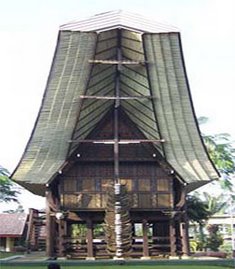Flores
Flores (Portuguese for "flowers") is one of the Lesser Sunda Islands, an island arc with an estimated area of 14,300 km² extending east from the Java island of Indonesia. The population is estimated to be around 1.5 million [1], and the largest town is Maumere.
Flores is located east of Sumbawa and Komodo and west of Lembata and the Alor Archipelago. To the southeast is Timor. To the south, across the Sumba strait, is Sumba and to the north, beyond the Flores Sea, is Sulawesi.
Administration
Flores is part of the East Nusa Tenggara province. The island is split into six regencies (local government districts); from west to east these are: West Manggarai, Central Manggarai, Ngada, Ende, Sikka and Flores Timur.
Geography
Wawo Muda Volcano, which erupted in 2001
Flores has several active and dormant volcanoes, including Kelimutu, Egon, Ilimuda, Leroboleng, and Lewotobi (see the full list).
Flora and fauna
The west coast of Flores is one of the few places, aside from the island of Komodo itself, where the Komodo dragon can be found in the wild. The Flores Giant Rat is also endemic to the Island.
In September 2003, at Liang Bua Cave in western Flores, paleoanthropologists discovered skeletons of a previously unknown hominid species. Homo floresiensis, affectionately termed hobbits after the small characters in the Lord of the Rings, appear to be miniaturized versions of Homo erectus standing about one metre tall. They may have existed until as recently as 11,000 BC. Local reports of elf-like people, the Ebu Gogo, or the Orang Pendek of Sumatra, have caused speculation that Flores man may have survived into the historical period, or even to the present. The discovery has been published in the October 28, 2004, issue of Nature magazine and the April 2005 issue of the National Geographic Magazine.[2] However, on August 21, 2006, the National Geographic Newsletter published an article reporting that several scientists now believe that the remains discovered in 2004 were not of a different species but were pygmies. Flores was also a habitat of the extinct Stegodon dwarf elephant until approximately 18,000 years ago. It also was the habitat of species of giant rodents. It is speculated by scientists that limited resources drove the few species that lived upon the island to gigantism and dwarfism. [3]
Culture
Some Fishing Boats on Flores
There are many languages spoken on the island of Flores, all of them belonging to the Austronesian family. In the centre of the island in the districts of Ngada and Ende there is what is variously called the Central Flores Dialect Chain or the Central Flores Linkage. Within this area there are slight linguistic differences in almost every village. At least six separate languages are identifiable. These are from west to east: Ngadha, Nage, Keo, Ende, Lio and Palu'e, which is spoken on the island with the same name of the north coast of Flores. Locals would probably also add So'a and Bajawa to this list, which anthropologists have labeled dialects of Ngadha.
Portuguese traders and missionaries came to Flores in the 16th century, mainly to Larantuka and Sikka. Their influence is still discernible in Sikka's language and culture.
Flores is almost entirely Catholic and represents one of the "religious borders" created by the Catholic expansion in the Pacific and the spread of Islam from the west across Indonesia. In other places in Indonesia, such as in the Malukus and Sulawesi, the divide is more rigid and has been the source of bloody sectarian clashes.
Tourism
Bena Village
The most famous tourist attraction in Flores is Kelimutu; three coloured lakes in the district of Ende. These coloured lakes change colours on a regular basis. The latest colours (late 2004) were said to be turquoise, brown and black.
There is good snorkelling and diving on several locations along the north coast of Flores, most notably Maumere and Riung. However, due to the destructive practice of local fishermen using bombs to fish, and locals selling shells to tourists, combined with the after effects of a devastating tsunami in 1992, the reefs have slowly been destroyed.
Labuanbajo (on the western tip of Flores) is a town often used by tourists, from where they can visit Komodo and Rinca. Labuanbajo also attracts scuba divers, as whale sharks inhabit the waters around Labuanbajo.
Tourists can visit Luba and Bena villages to see traditional houses in Flores. Larantuka, on the isle's eastern end, is known for its Holy Week festivals.
References
1. ^ "Trapping Komodo Dragons for Conservation" National Geographic - 28 Jan 2003
2. ^ Flores Special, Nature
3. ^ "Hobbits" Were Pygmy Ancestors, Not New Species, Study Says National Geographic - 21 Aug 2006
4. From Wikipedia, the free encyclopedia
Langganan:
Posting Komentar (Atom)

Tidak ada komentar:
Posting Komentar